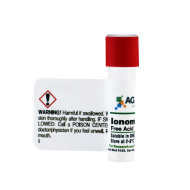Potential Clinical and Economic Value of Long-Acting Preexposure Prophylaxis for South African Women at High-Risk for HIV Infection
 |
| Preexposure prophylaxis (PrEP) is one of the few preventative options available for young South African women of whom are at risk for HIV. Three PrEP strategies were tested for cost-effectiveness, lifetime HIV infection risk, and survival rate: no PrEP, standard (oral) PrEP, and long-acting (injectable) PrEP. Standard PrEP has an effectiveness of 62% with $150/year cost per patient while long-acting PrEP has an effectiveness of 75% with $220/year cost per patient. In comparison with the control group (no PrEP), standard PrEP and long-acting PrEP cost $580 and $870 more per person respectively. The two treatment groups averted an average of 15 and 16 deaths per 1000 women of whom possessed a high risk of infection respectively over the course of 5 years. On a lifetime basis, both treatment groups were cost-effective compared to no PrEP. Long-acting PrEP, in comparisons with the standard counterpart, saved $150/year, and cost $1.6 billion over 5 years when provided to 50% of eligible women. |
Emergence of Acquired HIV-1 Drug Resistance Almost Stopped in Switzerland: A 15-Year Prospective Cohort Analysis
 |
| The monitoring of time trends at the population level is important for gathering information on overcoming the barrier of drug resistance in order to create successful antiretroviral treatment (ART). In this study, 11084 patients of whom undertook a type of ART treatment from the Swiss HIV Cohort Study (SHCS) between 1999 and 2013 were imputed based upon the patients risk of harboring drug-resistant viruses, with drug-resistance being defined as the presence of more than or equal to one major mutation in a genotypic resistance test. With the upper estimated prevalence limit of drug resistance among ART patients decreasing from 57.0% in 1999 to 37.1% in 2013 as well as the prevalence of 3-class resistance decreasing from 9.0% to 4.4% (with ART-initiating patients after 2006 always having a <0.4% in terms of the prevalence of 3-class resistance), the effectiveness of ART treatment in preventing HIV type I drug resistance is well-controlled. With careful monitoring and potent therapies, drug resistance can be circumvented. |
Efficacy and safety of treatment simplification to atazanavir/ritonavir1lamivudine in HIV-infected patients with virological suppression: 144 week follow-up of the AtLaS pilot study
 |
| Atazanavir and Lamivudine for Treatment Simplification (AtLaS) was a single-arm pilot study for a dual regimen of atazanavir/ritonavir+lamivudine in virologivally suppressed HIV-positive patients. In this 144 week follow up of the treatment, patients treated with the three drug regiment were switched to 300/100 mg of atazanavir/ritonavir plus 300 mg of lamivudine once daily. The results of this 144 week treatment include 22.5% treatment failures (defined as a discontinuation/switch of the regimen or virological failure), a significant CD4 count, estimated glomerular filtration rate, lumbar spine T-score and Z-score, and total cholesterol increase. There was a decrease in trunk fat. Overall, the follow-up study suggested a positive long-term efficacy of the regimen with potential improvement of the CD4 count, renal function, and bone mineral density. |
Contributors to diffusion impairment in HIV-infected persons
 |
| In both smoking and non-smoking HIV-infected individuals, abnormal diffusing capacities are common without much understanding of the cause. A cross-sectional analysis of 158 HIV-infected individuals without a history of acute respiratory symptoms or infections was undergone to determine any association between lung diffusing capacity for carbon monoxide by observing various demographics such as pulmonary spirometric measures, airway inflammation, pulmonary vascular/cardiovascular disease stratified by smoking, etc. Their findings conclude that airway obstruction, emphysema, and inflammation do influence the diffusing capacity for carbon monoxide in HIV patients, with people of whom reported never smoking possessing a phenotype of diffusing capacity impairment. |
Sputum induction to aid diagnosis of smear-negative or sputum-scarce tuberculosis in adults in HIV-endemic settings
 |
| The mortality rates and cause of death were assessed in an international cohort study across Eastern Europe and Western Europe and Argentina. The mortality rate of HIV infected patients of whom contract tuberculosis (TB) is prevalently high in Eastern Europe. The cohort study composed of an analysis of mortality rates and causes of death from the time of tuberculosis diagnosis in 1078 HIV/TB patients. The factors associated with TB-related death were analyzed utilizing a multivariate Poisson regression analysis. TB was the main cause of death in Eastern Europe, with 80% of patients 3 months after their initial diagnosis, a statistic three to nine times larger than the Western Europe and Argentina statistic. Eastern Europe, therefore, has persistently higher mortality rates for HIV/TB patients than Eastern Europe. |
|







